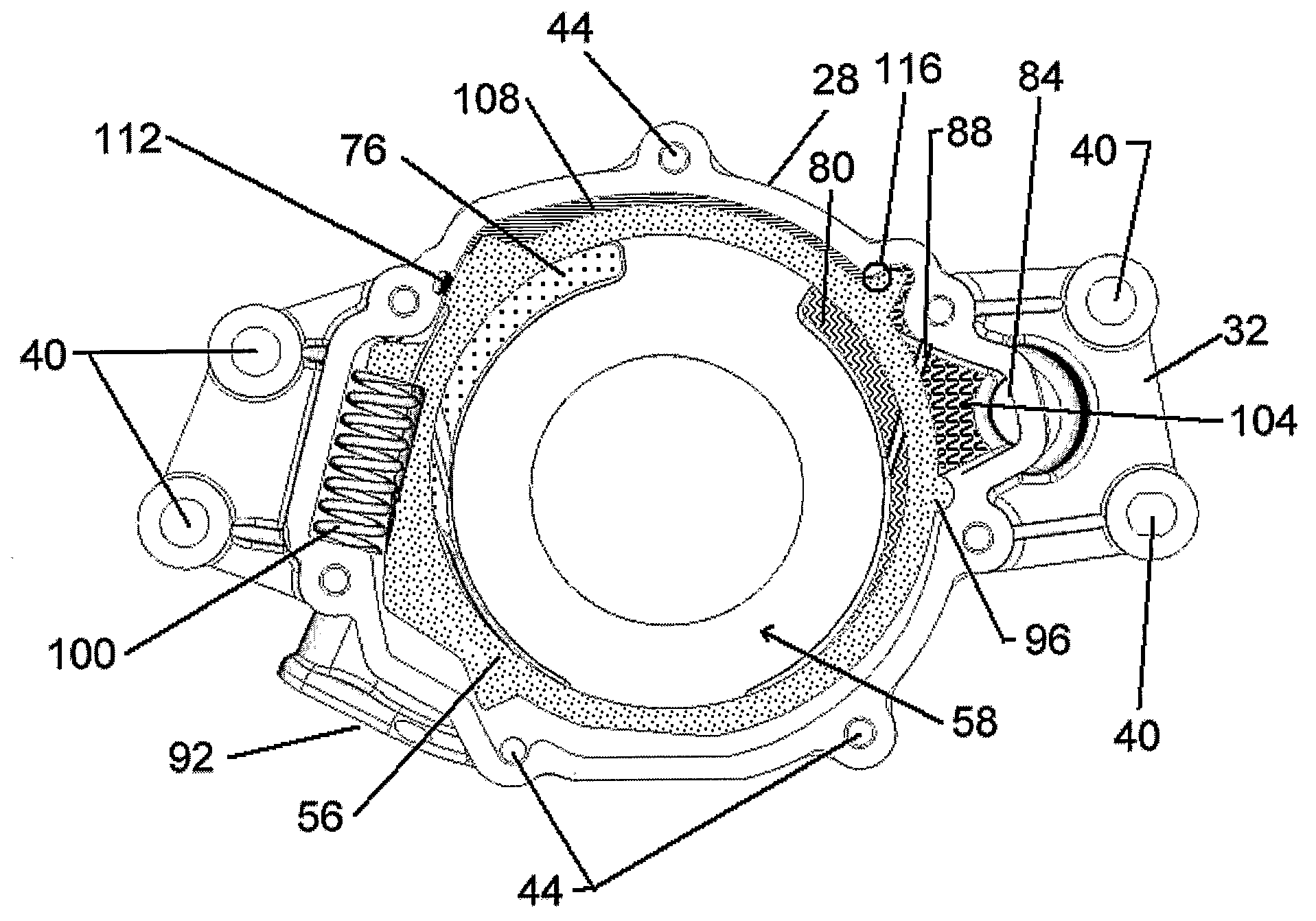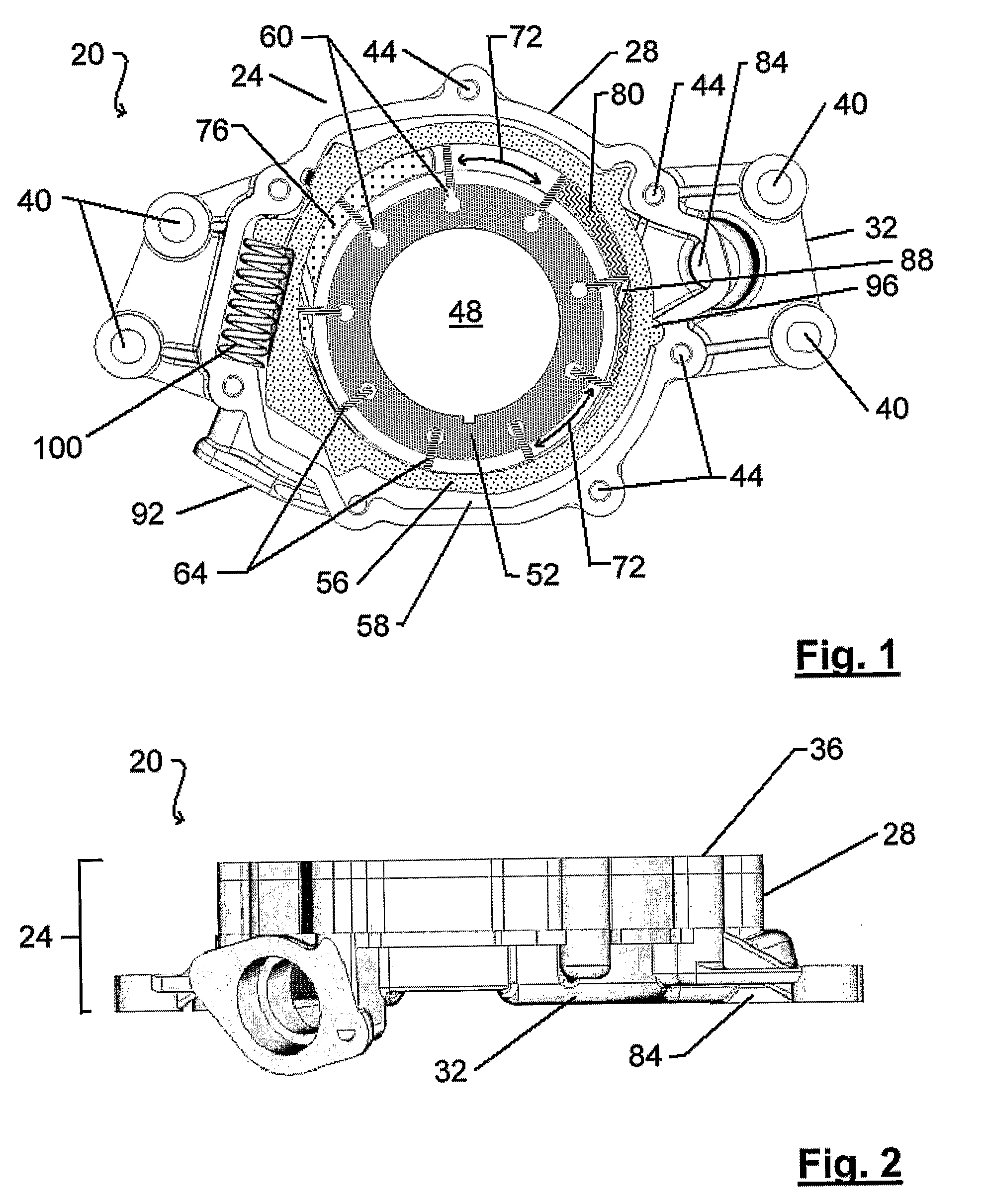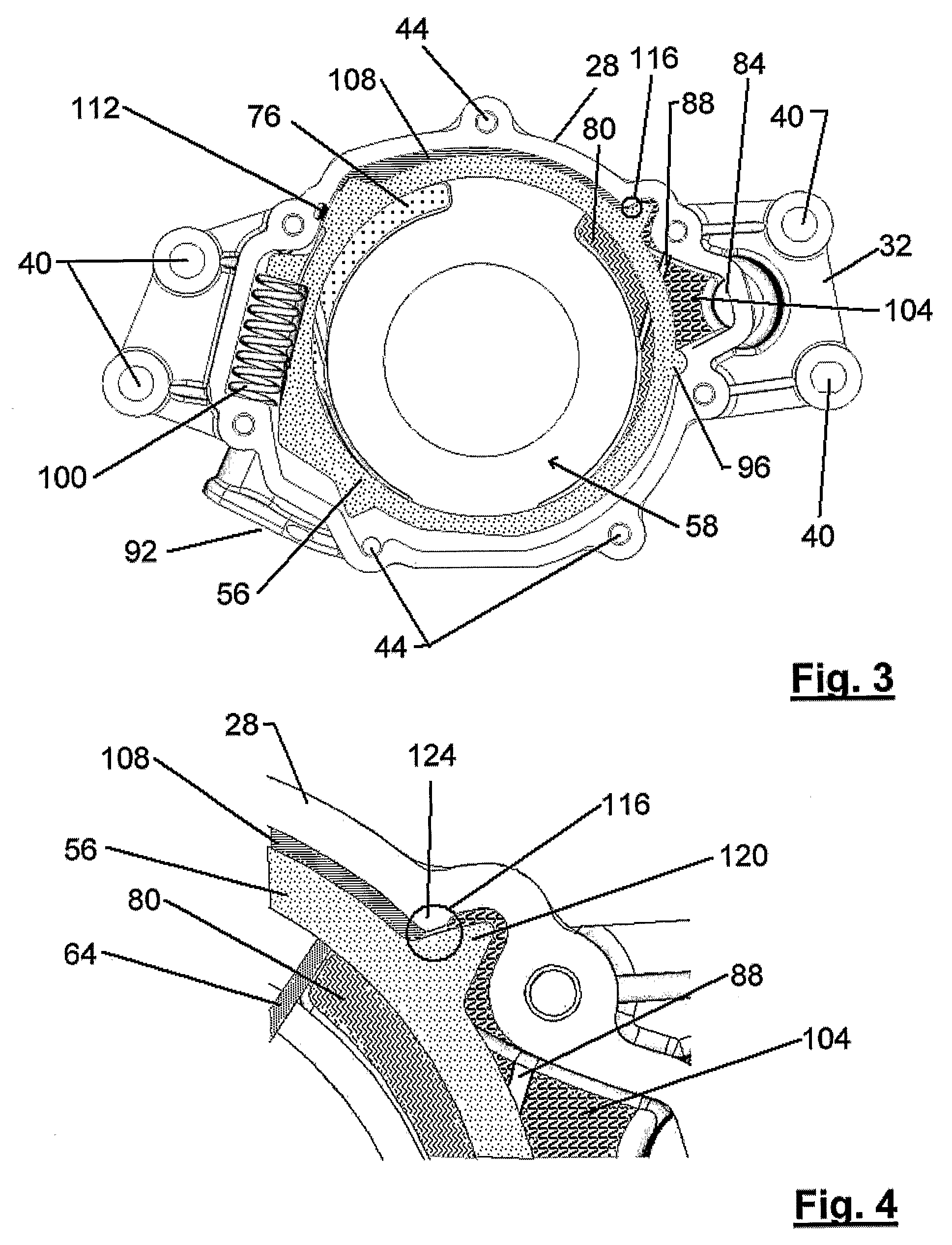Vane pump using line pressure to directly regulate displacement
a vane pump and line pressure technology, applied in the direction of liquid fuel engines, rotary or oscillating piston engines, rotary piston engines, etc., can solve the problems of pulsations in the output pressure of the pump, disadvantages of the pump taught in bistrow, etc., to reduce the pressure pulsations of the working fluid and reduce the pulsations of the output working fluid
- Summary
- Abstract
- Description
- Claims
- Application Information
AI Technical Summary
Benefits of technology
Problems solved by technology
Method used
Image
Examples
Embodiment Construction
[0035]A variable displacement vane pump in accordance with an embodiment of the present invention is indicated generally at 20 in FIGS. 1 and 2. Pump 20 includes a housing 24 composed of a pump body 28, a rear plate 32 and a cover plate 36 (removed in FIG. 1) placed in spaced-parallel relation to each other. Housing 24 includes one or more holes 40 for mounting onto a mounting plate of an internal combustion engine, or other prime mover, not shown and rear plate 32 includes a set of internally threaded bores which align with through bores 44 in pump body 28 and cover plate 36 to receive bolts to affix cover plate 36, pump body 28 and rear plate 32 to one another. While in the illustrated embodiment pump housing 24 comprises separate components, i.e. pump body 28, rear plate 32 and cover plate 36, it will be apparent to those of skill in the art that pump body 28 can also be integrally formed with either rear plate 32 (in which case housing 24 would comprise a cover plate 36 and an i...
PUM
 Login to View More
Login to View More Abstract
Description
Claims
Application Information
 Login to View More
Login to View More - R&D
- Intellectual Property
- Life Sciences
- Materials
- Tech Scout
- Unparalleled Data Quality
- Higher Quality Content
- 60% Fewer Hallucinations
Browse by: Latest US Patents, China's latest patents, Technical Efficacy Thesaurus, Application Domain, Technology Topic, Popular Technical Reports.
© 2025 PatSnap. All rights reserved.Legal|Privacy policy|Modern Slavery Act Transparency Statement|Sitemap|About US| Contact US: help@patsnap.com



